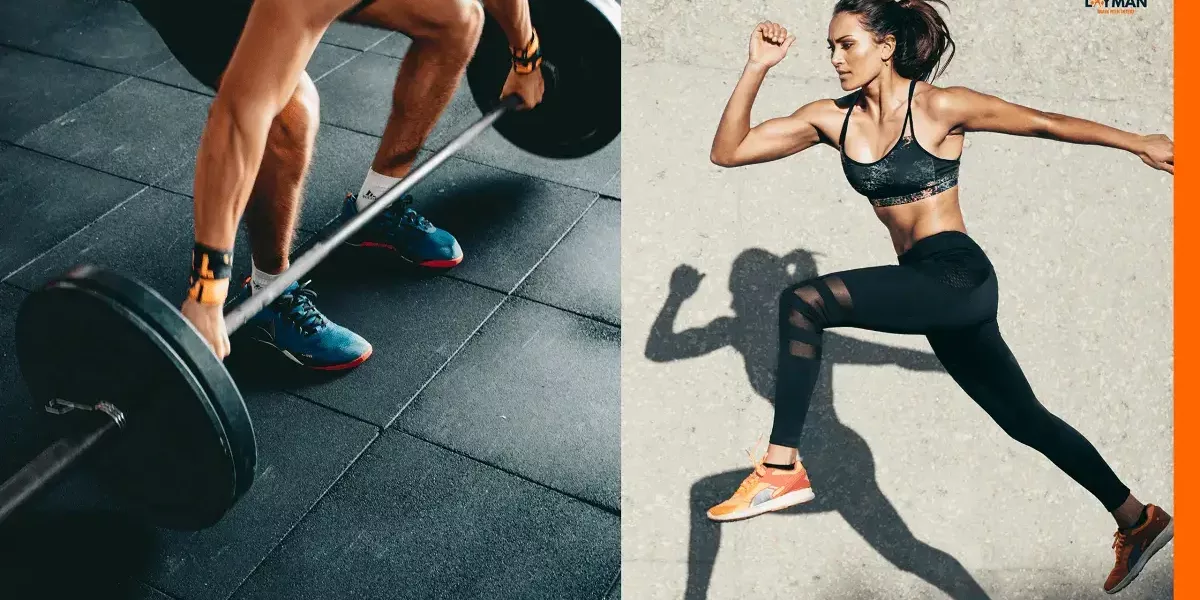Introduction to the Human foot
To perform well in running and resistance training, an individual needs adequate mobility, flexibility, and stability. The foot sets the foundation for stability in movement, and a network of four different joints supports it.
In addition, the human foot has a natural arch that helps correct weight distribution among the foot tripod. The foot tripod consists of three vital points: the ball of the big toe, the base of the small toe, and the center of the heel. Thus, the right pair of training shoes are needed to support the natural arch system and load distribution of the body weight either during the run or resistance training.
What are the considerations for selecting a training versus running shoe?
1. Sole flexibility: Running requires a complete movement from heel to toe, whereas training divides into two parts, such as ground-based multi-directional drills and unsupported compound movement. The need for sole flexibility will be higher in multi-directional drills, whereas unsupported compound movements will require a rigid sole that does not bend under high forces.
2. Heel drop: The heel drop plays a role in supporting the heel, and it is the distance from the heel height to the toe height. A higher heel drop with firm soles in weightlifting shoes provides an advantage to lifters with poor ankle mobility. In contrast, a higher heel with flexible soles is due to added support and cushion in running shoes.
3. Toe box: A wide toe box allows for enough movement of the toes, which helps establish firm contact with the ground, increasing the body’s stability. This wide toe is often a beneficial quality in training and running shoes.
What are the different types of training shoes?
#1 Traditional running shoe
Example – Nike Air, Asics Gel Excite, or Adidas Ultraboost
The running shoes created by famous brands cushion the foot using gel or airbase materials to absorb the high forces when the foot makes contact with the ground. The reduced impact helps prevent stress injuries during the run and provides comfort to the user. But using the same pair of shoes to squat or perform the snatch will be like doing the exercise on a couch.
The surface below will be shaky, and the lifter will not establish firm ground contact. Therefore, the foot needs to be as close to the contact surface as possible, and the shoe has to support the natural arch position to facilitate the foot tripod for load distribution.
#2 Flat training shoes
Example – Canvas or Chuck Taylors
Individuals can use an alternate option of shoes in the weight room, such as Canvas or Chuck Taylor. The rubberized flat sole provides decent stability to the foot during unsupported compound movements, but the drawback is a narrow toe box with no heel drop.
The heel drop is essential for stiff ankles lacking adequate ankle mobility. Thus the shoe will be uncomfortable for individuals with limited ankle mobility during the squat and snatch, where a more upright chest position is needed.
#3 Weightlifting shoes
Example – Nike Romaleos or Reebok Legacy Lifter
The sport of Olympic weightlifting is highly technical. Suppose a lifter possesses good technique with adequate mobility, flexibility, and stability to get under a heavy load and stay there for a brief time. In that case, these shoes can become an excellent aid for getting better in the lifting position.
In addition, the 16 to 20mm high heel drop makes up for some lifters’ lack of ankle mobility due to stiffness. Of course, the lifter should continue working on drills to improve mobility, but on days where performance is the focus, these shoes come in handy.
Conclusion
Suppose a client has a low budget and cannot afford two separate shoes for running and training. Then they should invest in an excellent running shoe and manage the gym training sessions barefoot. The high-impact forces experienced during running will lead to a drop in performance and cause injuries.
The barefoot training in the gym can provide the proper stability, thereby not compromising any performance.
Suggested Reading
- How to do Squats properly?
- Effects of weight training on bone growth during adolescence


